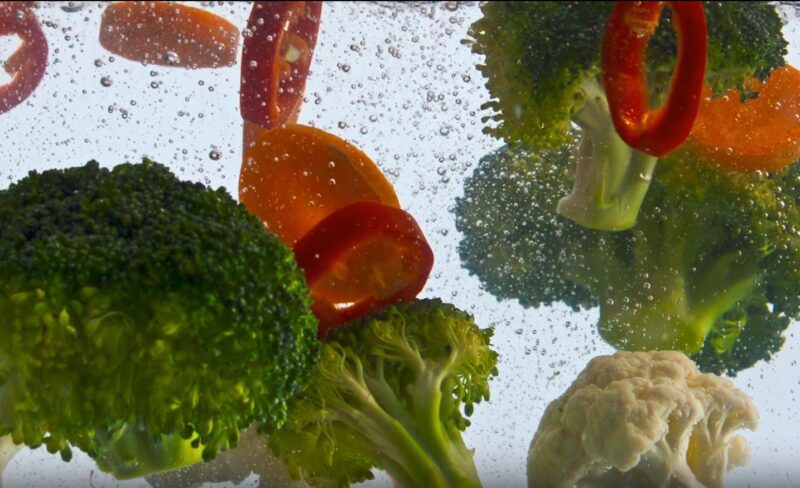In seasons when fresh vegetables are scarce, frozen varieties step into the limelight. By filling your freezer with top-notch frozen vegetables, you can craft nutritious, whole-food meals any time of the year. Often, we overlook the bounty of food readily available to us, not realizing the vulnerability of our food supply chain.
There are moments when fresh produce is out of reach, or perhaps we’re simply looking to clear out the freezer or utilize frozen stock before a move.
This article delves into the nutritional comparison between fresh and frozen vegetables, highlights the advantages of cooking with frozen produce, guides you on freezing your own, and identifies the prime vegetables to have on hand in your freezer.
You’ll also find specific ideas and recipes for each vegetable type, offering inspiration on how to seamlessly integrate them into delicious dishes.
Are Frozen Vegetables as Healthy as Fresh?
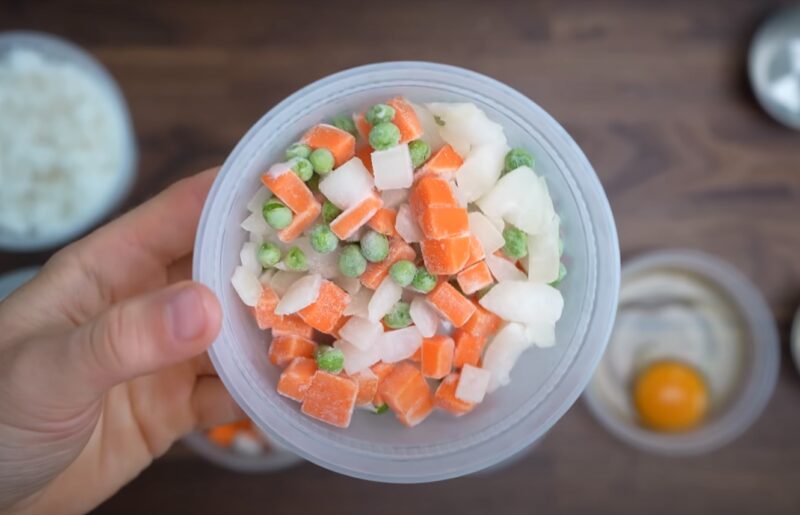
Fresh veggies may be more inspiring, but they are not necessarily more nutritious. Vegetables that are picked to be frozen, are usually picked at peak ripeness, and quickly frozen to maintain maximal nutrition. Yes, it’s true that fresh, organic veggies are delicious, however:
- They aren’t always in season.
- They lose nutrients, antioxidants, and freshness as time between harvest and eating increases.
- They are often picked prior to peak ripeness, which means fewer nutrients.
- They only last so long before wilting or rotting.
Why Cook with Frozen Vegetables?
There are many benefits to cooking with frozen vegetables:
- They eliminate the need for washing, chopping, and clean-up.
- Frozen vegetables are quick additions, making it easier to add more produce to your meals.
- They last a whole lot longer than fresh — which is extremely beneficial when you are limiting trips to the grocery store, or if our fragile food supply gets interrupted.
- Frozen vegetables are usually more budget-friendly.
- They offer year-round access to out-of-season produce.
- They fall into the real food category promoting health and vitality.
Best Tips for Cooking with Frozen Vegetables
Frozen vegetables can offer nutrient levels equal to or even surpassing those of their fresh counterparts. Yet, boiling them can significantly diminish their nutritional benefits. Below are some more effective methods and useful advice for preparing meals with frozen vegetables.
- Not all frozen veggies need to be cooked. Use them to cool down hot dishes, or add them to smoothies.
- Adjust the cooking time. Frozen veggies usually cook faster than fresh because they have been partially cooked already. Sometimes you can reduce the cooking time by half.
- When in doubt, try roasting frozen vegetables!
How to Freeze your own Vegetables
It’s helpful to keep a small stash of frozen vegetables on hand, and it’s also helpful to know how to make your own frozen vegetables to preserve the fresh produce you have preventing food waste.
- Rinse and pat dry.
- Most vegetables require a little additional prep, such as trimming, peeling, and blanching. Here’s a helpful guide to blanching.
- Lay prepared veggies on a parchment-lined baking sheet in a single layer (avoid veggies touching each other).
- Place the baking sheet in the freezer for two hours (or overnight).
- Transfer to freezer-safe bags, removing as much air as possible, and store in your freezer for up to six months.
Best frozen vegetables to buy
Here is a list of my favorite frozen vegetables to keep in your freezer for easy meals and times when you don’t have access to fresh produce. I’ve also included general ideas and specific recipes for which you can use these nutritious foods.
Dark Leafy Greens
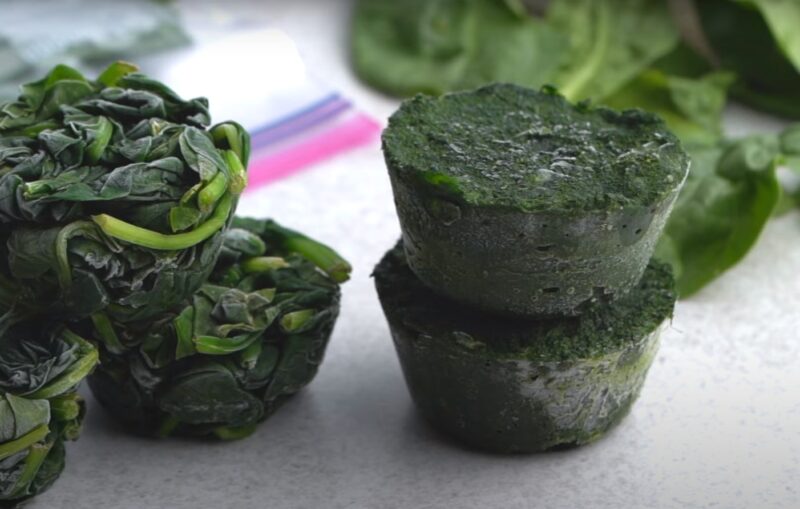
Frozen dark leafy greens, such as kale, chard, and spinach, are easy to use because they are already washed, chopped, and ready for your kitchen creativity.
- Smoothies: Substitute fresh for frozen greens in smoothies, such as this Acai Kiwi Smoothie recipe (just be sure to decrease the amount of greens).
- Soups: Add dark leafy frozen greens to your favorite soup, like this Chicken Coconut recipe (substitute the fresh arugula).
- Sauce: Stir dark leafy frozen greens into tomato sauce to serve over zucchini noodles or spaghetti squash.
Broccoli
I ALWAYS keep frozen broccoli in my freezer — it’s such a quick way to boost the color and nutrition level of a meal.
- Curries: I love adding frozen broccoli to this Ginger Shrimp Curry dish. Simply stir it in during the final 10 minutes of simmering.
- Side dish: Roast frozen broccoli for an effortless side dish.
- Frittata: Thaw frozen broccoli (or run it under cold water and pat it dry) and add it to your favorite frittata, such as this Clean Out the Fridge recipe.
Brussels Sprouts
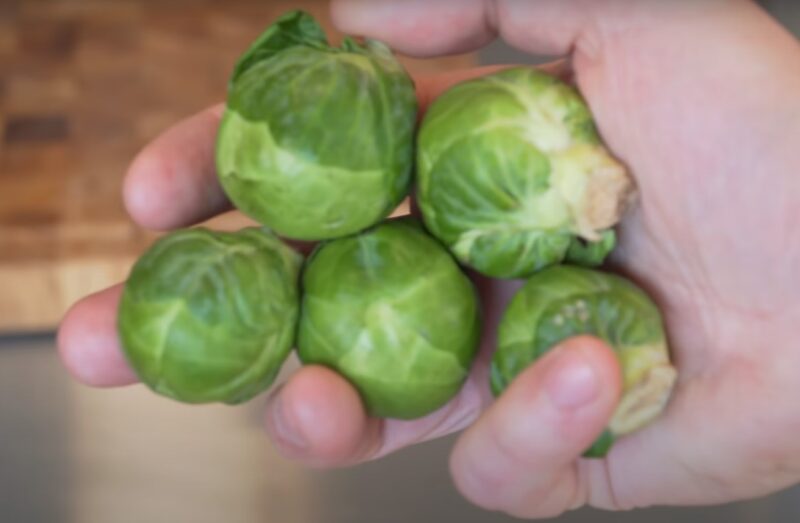
I’m not going to lie — nothing replaces fresh Brussels sprouts! However, with proper cooking tips, frozen Brussels turn out far better than you might think.
- Roasted: Roasting Brussels straight from the freezer is easy and cuts out the tedious trimming process of fresh Brussels.
- With bacon: Saute frozen Brussels sprouts with bacon!
- On the stovetop: Saute thawed and halved frozen Brussels with butter and garlic.
Butternut squash
Butternut squash, with its rich nutrients, sweet and nutty taste, and smooth texture, is a favorite ingredient of mine for winter dishes. The preparation process can be less than enjoyable. Its hard skin poses a challenge to peel, and handling the pulp often results in a stubborn, crackly dry film on the hands that can be tough to remove. This makes the convenience of frozen cubes a much-appreciated alternative. Here are my favorite ways to use frozen cubed butternut.
- Roasted: Apple Sage Butternut Squash, using frozen cubes, makes an easy and tasty side dish. Make sure to preheat the baking sheet and place it on the lowest oven rack to help crisp the frozen squash. Reduce the cooking time by five to ten minutes.
- Soup: In place of pumpkin in a savory pureed soup.
- Smoothies: Add frozen butternut to smoothies for extra creaminess, nutrition, and a touch of sweetness. This Sunrise Butternut Squash Smoothie is one of the best.
Peas

Not only does a bag of frozen peas make for a perfect ice pack, but it’s also one of the easiest vegetable additions to a multitude of dishes. Of course, these little green morsels can be quickly steamed and served with a pat of butter and a sprinkle of salt for a delicious side, but here are a few other ideas.
- Salad: One of the easiest ways to use frozen peas is gently thawed and straight onto a green salad!
- Pesto: Or, add a handful of frozen peas straight into the food processor with your favorite pesto ingredients!
- Soup: Adding frozen peas to soup, especially a chicken or turkey soup, is a no brainer!
Riced Cauliflower
Frozen cauliflower florets are certainly an option, too, but I find riced cauliflower to be so versatile and a quick substitute for grained rice.
- Side dish: Frozen riced cauliflower is perfect in Mediterranean Cauliflower Rice.
- With stir-fry: Quickly saute frozen riced cauliflower in a skillet with coconut oil, or butter, to serve Chicken Teriyaki over.
- In place of rice: Use it in this Cauliflower Risotto with Grilled Shrimp recipe! Yum!
Sliced Peppers
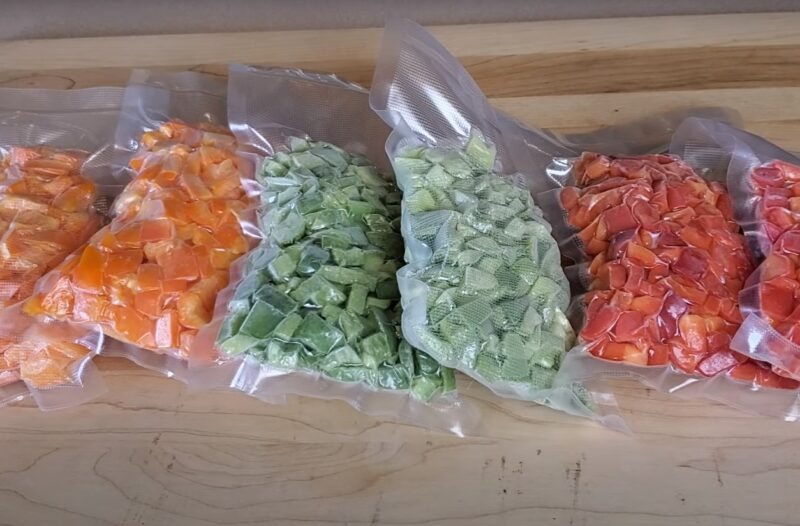
Frozen sliced bell peppers have a tendency to end up soggy, so how you use them makes a difference. If you want to enjoy their taste while they work to provide your body with nutrients, try these suggestions.
- Stir-fry: Add them to a stir-fry! Let them thaw slightly and pat them dry — then in the skillet they go.
- Soup and stew: Frozen bell peppers work great in soups and stews. Try them in this Primal Pork Chili recipe.
- Sauce: Add frozen peppers to your favorite tomato sauce, or homemade tomato soup and puree.
Carrots
Frozen carrots should be a freezer staple in all their forms. These orange root veggies offer flavor, texture, and nutrition to many dishes. Here are a few of my favorite uses.
- Smoothies: Add frozen sliced carrots to this Pineapple Cilantro Smoothie for a little natural sweetness.
- Soup: Use frozen sliced carrots in place of fresh in this delicious Ginger Carrot Soup recipe.
- Noodles: Frozen carrots even come spiralized and are delicious in this Thai Beef with Carrot Noodles recipe.
Sweet Potatoes and Potatoes
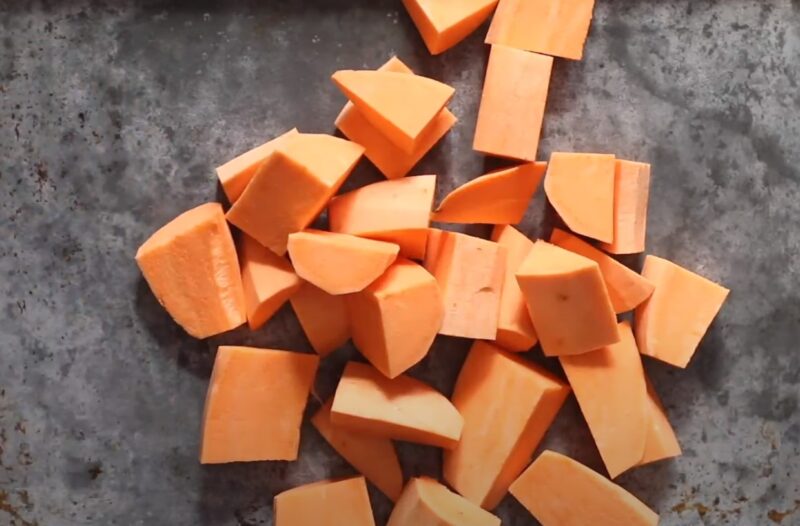
Frozen potatoes come cubed, shredded, and in fry shaped matchsticks. Plenty of options for these nutrient-rich tubers.
- Oven fries: Love roasting frozen organic sweet potato “fries” to pair with burgers, steak, or chicken.
- Mashed: Use cubed frozen sweet potatoes to make Vanilla Bean Sweet Potato Mash.
- Casserole: Bake shredded frozen sweet potatoes for your favorite breakfast casserole crust.
Green Beans
I like to look for frozen thin green beans, petite green beans, or haricots verts because I find these to be more tender.
- Shepherd’s Pie: Add frozen green beans to this Creamy Primal Shepherd’s Pie.
- Casserole: Use frozen green beans in this delicious Whole30 Green Bean Casserole recipe.
- Side dish: You can also roast frozen green beans in place of fresh. Just rinse them with cold water, pat them dry, toss with oil and seasonings, and roast at 425ºF until crisp.
Asparagus

Don’t discount frozen asparagus as a good staple to keep on hand. Here are my favorite ways to prepare this otherwise spring season veggie.
- Grill: What I love most about frozen asparagus is that you can pop it right onto the grill frozen! Toss with a little avocado oil and place your spears right on the rack.
- Pan-fried: A little garlic, ginger, and a splash of coconut aminos does wonders for frozen asparagus in a quick pan fry.
- Roasted: When it comes to fresh asparagus, ninety percent of the time I roast it in coconut oil for a tasty side. But, frozen asparagus turns out remarkably well this way also. I urge you to give it a go.
Artichoke Hearts
I never buy fresh artichokes but I find them to be a lot of work. But a bag of frozen artichoke hearts comes in handy! My favorite ways to use them are:
- Topping: Thawed, chopped and used as a topping on Mini Garden Meatzas.
- Roasted: Simply roasted! Try this recipe from Tastes Lovely.
- In a main dish: In this Chicken Tagine with Artichoke Hearts and Peas dish. A must try.
California-style Medley
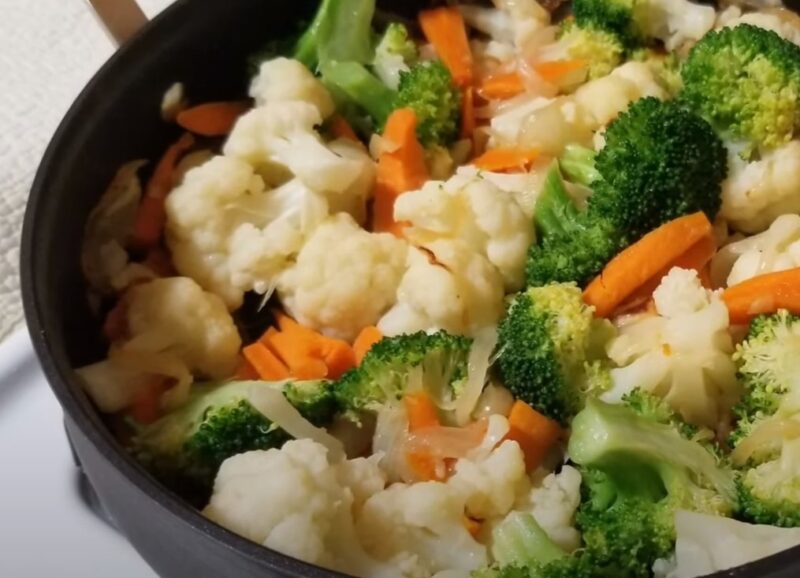
A California vegetable medley often consists of a mix of carrots, broccoli, cauliflower, and sometimes zucchini. It’s a colorful mixture of veggies to keep on hand for an easy side dish. The best way I have found to prepare this blend is roasting.
Toss frozen medley with melted coconut oil, or avocado oil, season with sea salt, garlic, and pepper and spread on a baking sheet. Place in a 425ºF preheated oven for 20 to 25 minutes. Top with Parmesan cheese if desired.
Asian Stir-fry Medley
This mixture of stir-fry veggies makes for the easiest stir-fry around! Heat a skillet over medium-high heat, add some avocado oil, toss in some sliced onions and thin-sliced meat to saute for three to five minutes (until meat is cooked).
Add a bag of Asian stir-fry frozen medley, and your favorite stir-fry sauce, and cook until heated through! Serve over cauliflower rice or grain rice for a well-balanced dish.
Avocado (I know it’s a fruit, but…)

Yes, I know avocado is not a vegetable, but if you have access to this low-sugar fruit in frozen chunks, it is the perfect addition to morning or mid-day smoothies, such as this Coco-cado recipe. Bring on the healthy fats!
FAQs
Is it OK to fry frozen vegetables?
Yes, it’s perfectly fine to fry frozen vegetables. There’s no need to thaw them first, as frying directly from frozen helps retain their texture and nutrients.
What frozen vegetables have the most protein?
Frozen peas and edamame are among the frozen vegetables with the highest protein content, offering a nutritious boost to any meal.
Which supermarket has the best frozen veg?
The quality of frozen vegetables can vary by brand and store, but supermarkets known for high-quality frozen produce include Trader Joe’s, Whole Foods, and Costco. Customer reviews and personal taste preferences can also guide your choice.
How long do frozen vegetables last?
Frozen vegetables can last for 8 to 12 months in the freezer if kept at a constant temperature. For the best quality, it’s recommended to use them within this timeframe.
Getting started
Wow! Now you have no excuses for not eating your veggies. When fresh produce items are unavailable, it’s time to turn to their frozen cousins. Use this long list of the best frozen vegetables, with loads of ideas, to get you started and enjoy healthy foods all year.
